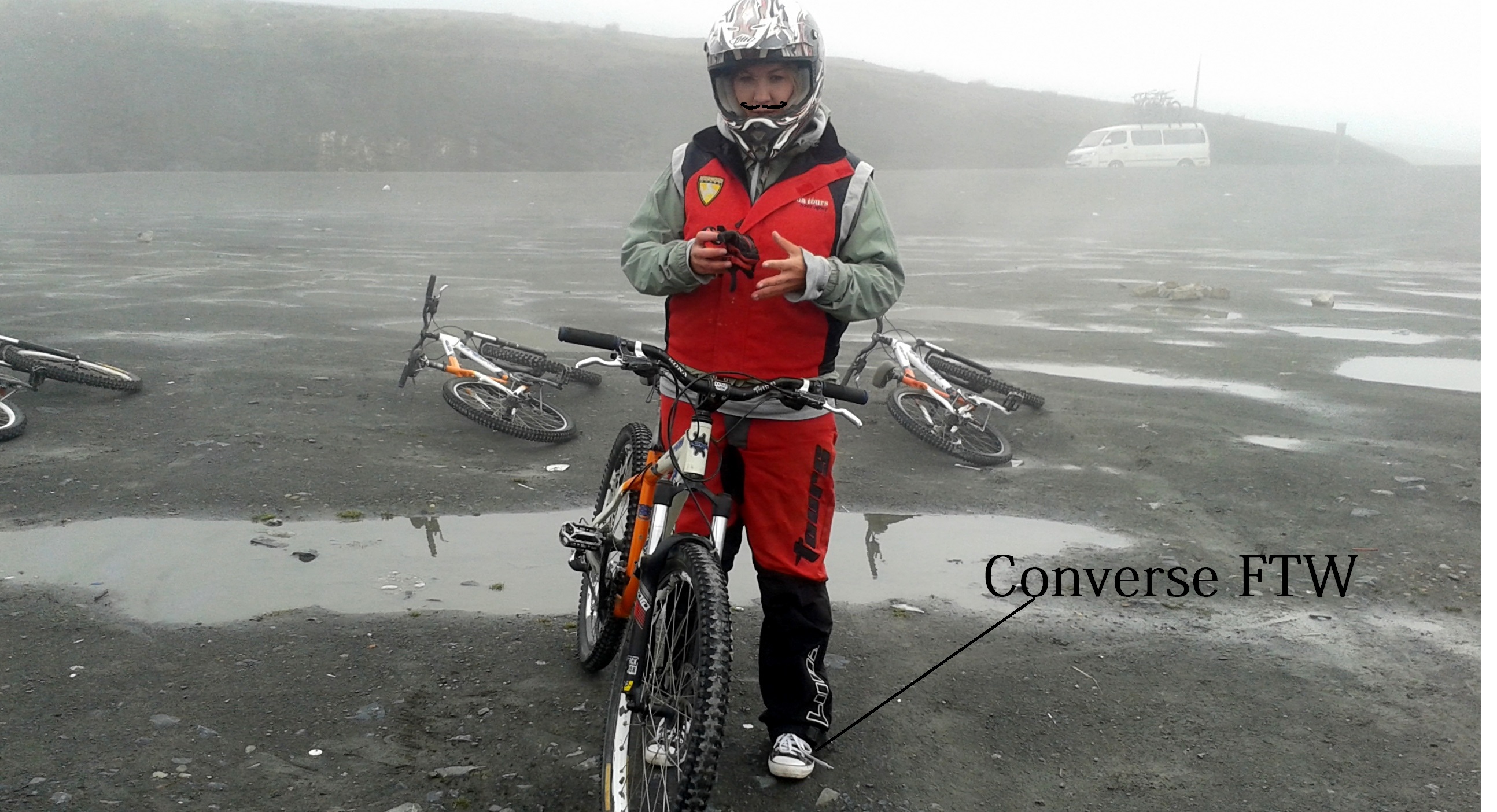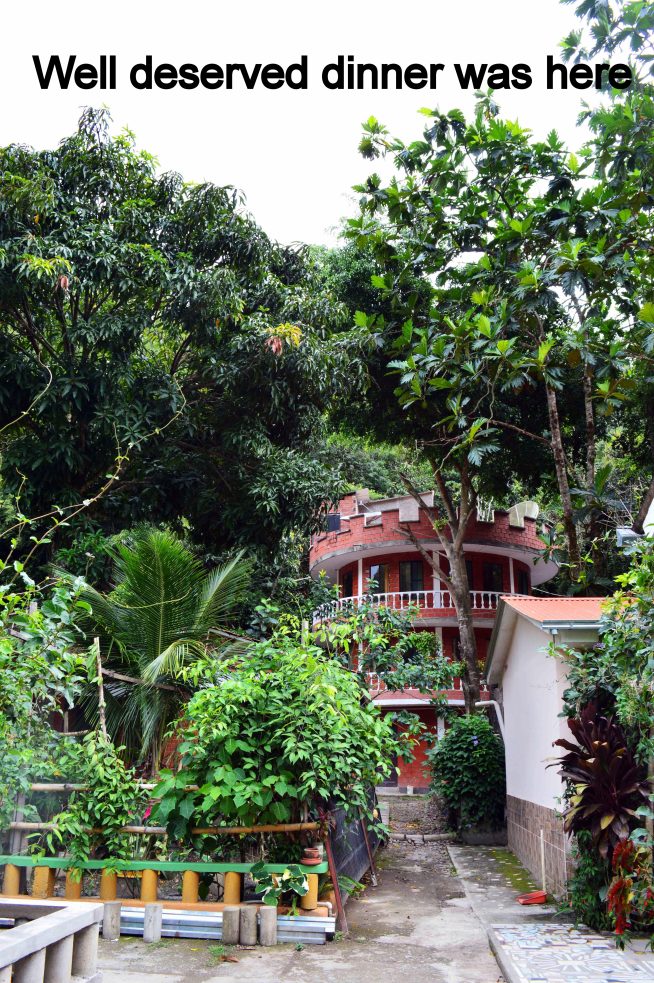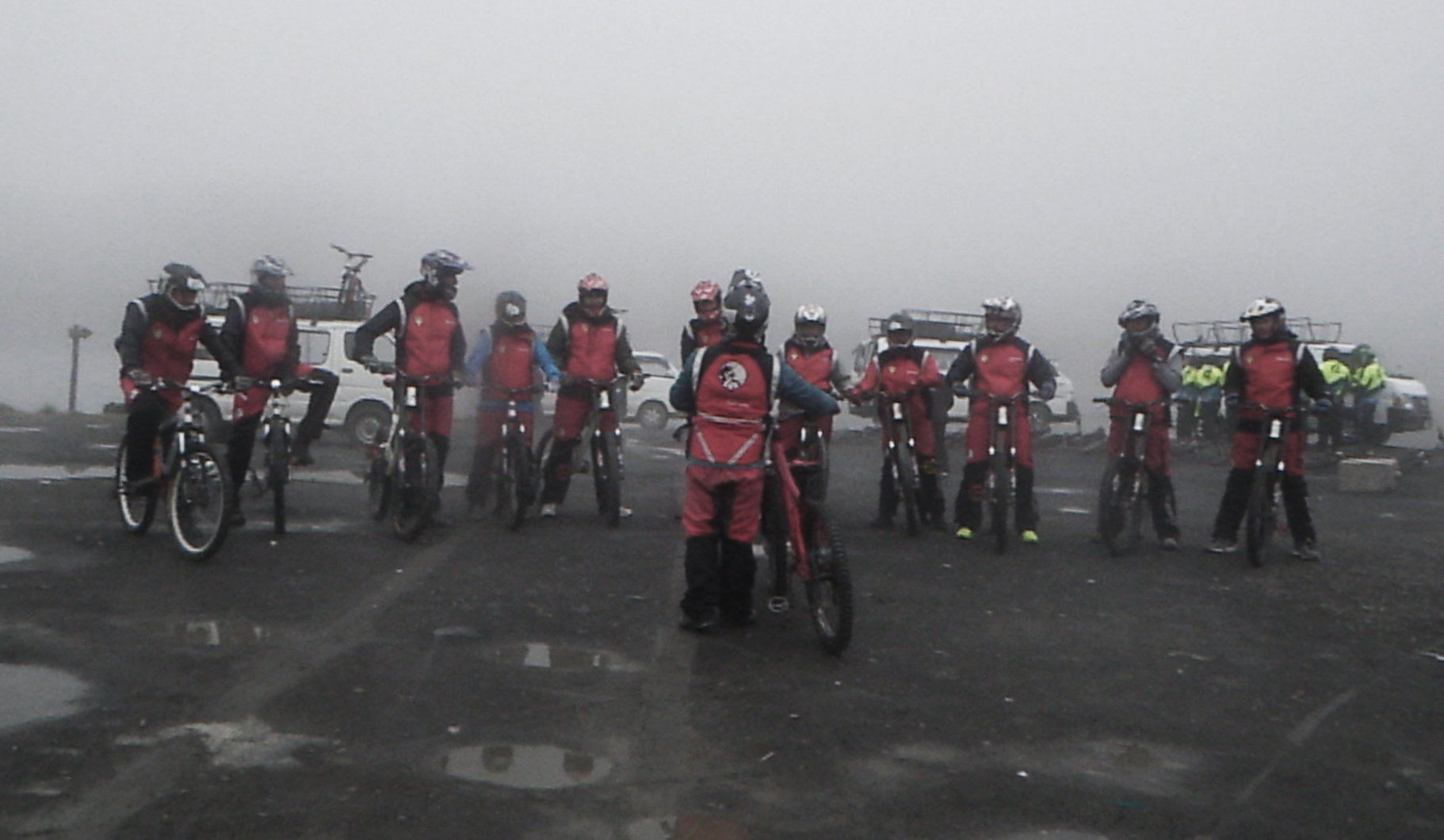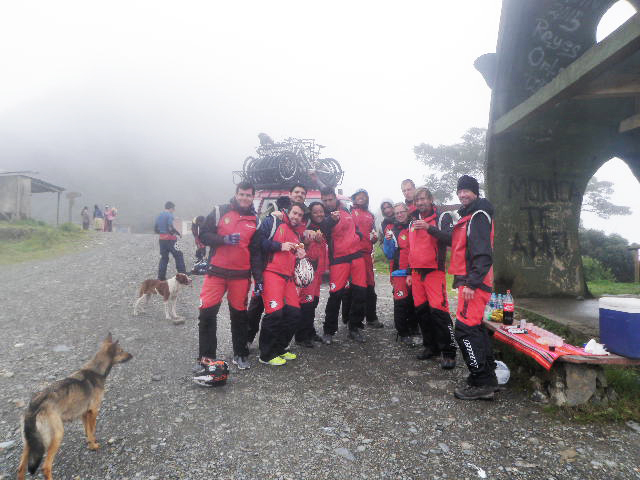Name “Dead Road” definitely does not come in a first place to any mind as a casual attraction. Originally named Yungas Road became well-known as a silent killer of thousands. Famous for being most dangerous road in the world that contributed to many deaths of drivers in the past and some cyclists in recent years. All as a result of how and where the road has been constructed. A combination of a single track road, 900m high cliffs, rainy weather, limited visibility, rockfalls, waterfalls and lack of guardrails participated in all death. Luckily, and finally, Yungas road was modernised to include two driving lanes, asphalt pavement, drainage systems and guardrails. New road has been opened in 2009, as an alternative of a must choice, replacing the dangerous 64 km stretch. All traffic being diverted to the new road. I am really glad motorists can now travel from La Paz to Coroico without fearing the journey may be their last. New road, apart from the fact that has already saved hundreds of life, left Bolivia also with one of the coolest, adrenaline giving and very adventurous tourist attraction in this country. People from all around the world visit this part of Bolivia to cycle down trough the original way. I did too.
Some statistics to give you the idea
“200 to 300 estimated death drivers yearly along Yungas Road and as late as 1994 there were cars falling over the edge at a rate of one every two weeks.”
“One of Bolivia’s most tragic road accidents happened on July 24th 1983 when an overcrowded bus veered off the side of the road and into a canyon killing more than 100 passengers.”
“Even with these improved conditions, Yungas Road shows no mercy. Nowadays, the death toll is limited to local workers and daredevil backpackers still using the infamous road. It is believed that more than 22 cyclists have lost their lives on Bolivia’s “Death Road” since 1998.”
To do or not to do
The answer for me is definitely YES TO DO. I wasn’t thinking even for a minute whether I should do it or not. It was surely one of the coolest thing I did in South America. However, it really is not for everyone. Most agencies will not be very honest with you, as they just want loads of people to sign for it for the profit. There is no limit of age, fitness etc, but since I have done it, I can set some average requirements. Here they are:
- Dead Road is suitable for confident cyclists to, of course, experts. A bit higher than average fitness and above. In particular for everyone aged 16 and more, but mostly done by younger group of people, usually at the age gap of 20-30. I did have two people at the age of 50-60 in my group. They both were fit and did well. Having said that, our group was one of the fastest, starting last, finishing first, so I am sure it can be done by not perfectly fit people, but maybe get some advice on best company to go with, if that’s the case for you.
- Most of the road is very stony and dusty. The whole road is 64 km long, and, thought, you mostly going downhill, you have to be a good cyclist with some experience to keep up with the group.
- You have to be very very careful, you need a perfect eyesight. The whole road is mostly thin and going via many waterfalls. Mentioning good eyesight meant to warn you that at the beginning road is extremely foggy, and it is difficult to navigate. Waterfalls are very tricky, as the group do not stop to pass them, you will go trough them at your max speed.

- Keep in your mind that it is pretty much “fast and furious” activity. You do not have a choice, but just go at max speed, well…at least my group was fast. So think twice if you want to do this. Trust me, I felt on my head, destroying the helmet, having an open wound on my left elbow, that got swollen as well. Yet, I still had 30 kilometers to go….gosh that was painful. Another guy broke his leg too.
- Cycling will last 5 hours, at high performance. Road is approximate downhill: 90% (one section contains a few small uphills). You have to be ready for sore hands.
- The drop in altitude means travelers experience both chilly conditions in the Altiplano highlands and hot humid conditions in the rain-forests below. Your body needs to be ready for it. Highly not recommended for people, that already feeling light-headed at the high of 2000m.
Once the answer is yes
- Even that you will be provided with food and water, take an extra bottle with you. You will start in very cold environment, but once half way trough, you will be surrounded by tropical hot weather, and that`s the time when your body will need some extra hydration, so you will drink loads at the end.
- Take a good waterproof jacket, as is usually raining near the top.
- As the temperature will be going up, proportionally to the distance cycled downhill, have something under to wear after, preferably with long sleeve, unless you will be provided with elbow protection.

- Take maybe old cloths. I thrown away my shoes after.
- Have some wet tissues, your face will be constantly covered with mud.
- Lucky you if you own GoPro, you can record the whole way by attaching your camera to the bike or helmet. Few of my group-mated done it.
- Do not book you trip if you just landed in La Paz. You body needs few day to adapt to the altitude. Yungas Road climbs to around 4,650 meters, from where you will start.
- Check the weather for the next day. No worries, you can book a trip just one day before, even before 17.00 pm. The bottom line is not to rain that day!
- Have a phone in your pocket. Thought you will have just quick breaks, you will have few chances to take some photos of this absolutely outstanding landscape and scenery.
- Remember! 21 cyclists and 5 guides have died since the road had been opened for mountain bike trips. It might not be the most dangerous road in the world anymore, but it is still the Death Road. Don`t be to cocky on the road.
- Most likely your agency will not cover the entrance fee for riding a bike. it is 50 Bs now – 25 Bs at the start and 25 Bs at the end of the road.
- You really should be covered with medical insurance for this!
Prices and booking
Dead Road is usually done from La Paz, the city in Bolivia. There are loads of agencies to provide you with their service, especially around city center area. Every single hostel and most hotels can book you in too. It really isn’t a problem to buy this trip. It is relatively cheap. Prices depend on agency and mostly the kind of the bike, you will be provided with. It will be between 50-100$, as of 2016. I rented the worst bike, and I think being cheap about the bicycle is not the best idea. Get a double suspension one and from a good agency. Never go with Luna Tours agency (see photos above to recognise uniform and logo). I went with them and was promised to be provided with photos and movies of us while cycling. They did film a lot, took loads of photos, and at the end agency provided us with CDs where all media suppose to be. After few moths, when I came back home exited to show movies to my sister and her kids (to show how cool is their aunt), I discovered that there is no photos or movies of us!!! Just old movies to promote agency. I was extremely disappointed and angry, I have only few photos from my phone. 
Brief overlook of the day trip to do the Dead Road
- My meeting point was at the cafe in La Paz at 7.00 am where we had a breakfast, and we briefly discussed the plan for the next 10 hours. Please note that some agencies can pick you from the hotel.

- At 8.00 am our bikes got uploaded to the top of the van, we sat in, and we went off from La Paz, which is at a height of 3,600 meters (11,810 feet), to the foot of the Andes Mountains towards the summit, which was at 4,700 m.
- Approx at 10.00 am we arrived at the starting point of La Cumbre Pass. We then proceed to get the specialized equipment for each of us. The guides make recognition of our teams. We were also explained of all the rules at the road, how to sign with your hand, and what our schedule will be.
- We were fitted into our gear that was: a jacket, pants with knee pads to put under, gloves, and a full-face helmet. Then we tested our mountain bikes: breaks and sit high. Our guide rechecked all again to make sure all is safe, and we went off.
- Starting the adventure at around 11.00 am.
- First 20 kilometers is via new asphalt road to Coroico. Actual Dead Road will start after that length. In this bit we can get used to the bikes and enjoy the road before difficult part.
- Quick break for a snack before getting in to actual Yungas Road.
- Dirt road begins at a height of 2,700 meters (2,953 feet) above sea level. In the beginning of the Bolivian jungle. Exactly where the paved road ends begins the most dangerous road in the world.
- Keep cycling through rivers, waterfalls, along with the wide variety of beautiful flora and fauna with few breaks to keep the team together.
- At 15.00 finishing and arriving at the bridge, congratulating each other. At the end of the road, you will get a well deserved beer or coke and a t-shirt. I picked coke…hmmm, I must have being still in shock after my fall :D.
- After a little rest heading off for a well deserved dinner with swimming pool on the side and showers to refresh.
- At approx 16.30-17.00 heading back to La Paz, arriving at around 18.30-19.00.














Please come to SE Asia and leave us some of ure tips 😀 ! or middle east ??
LikeLike
I am planning a SE Asia backpacking trip this year :D. Thank you for checking my post by the way 🙂
LikeLiked by 1 person
Good ! Like that … Keep us posted !
LikeLike
Which countries do you plan to cover anyway ??
LikeLike
I want to cover all :p i will probably buy a one way ticket, and I will see where will I end up.
LikeLiked by 1 person
I am planning to cover some parts of Vietnam and Cambodia myself … but I may not have as many days off as you do 😉 !
LikeLike
Great idea! Cambodia must be absolutely amazing. Ah no no, this is a new blog, and I started to travel 3 years ago, so mostly I write about my past travel…I am working, I wish I could have more time off too.
LikeLiked by 1 person
Ah ! and I thought u were way above mortals like us .. good luck with your blog ! You seem to have remembered a lot !
LikeLike
Hahah, I am a very very average. Thank you for checking my posts, I appreciate it.
LikeLiked by 1 person
I just like the home page pic of your site … so I come back again and again !! where is that place ??
LikeLike
Thank you very much! I think this pic adds an extra dimension and space to my homepage. This is a Valley of the Moon in northern part of Chile.
LikeLiked by 1 person
South America .. your playground .. have u covered all ?? Like the Andes etc ?? Must be really beautiful I’m sure !
LikeLike
This was fascinating. I am sure it was a blast. You are either brave or crazy! I loved this post.
LikeLike
Oh thank you 🙂 it was definitely adventurous!! I think the best is to do it alone in your own time, to adapt your skills to the speed. Scenery around is absolutely beautiful too.
LikeLiked by 1 person
My son used to be a mountain bike racer. I can imagine a group like him on the trail. Whew!
LikeLike
I think he might like it then 🙂
LikeLiked by 1 person
Wow! Crazy biking!
LikeLike
It was indeed:)
LikeLike